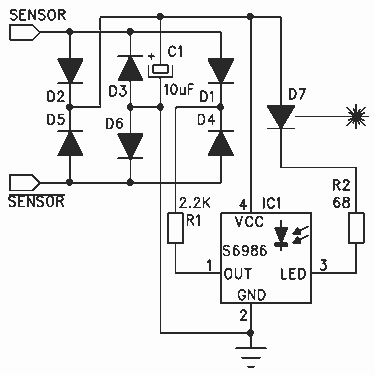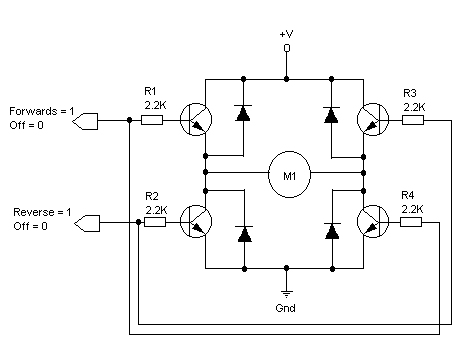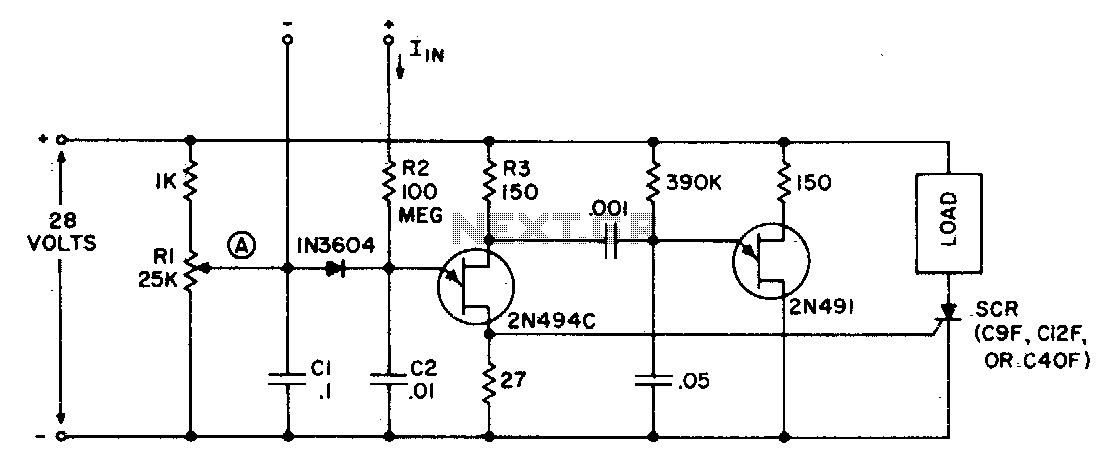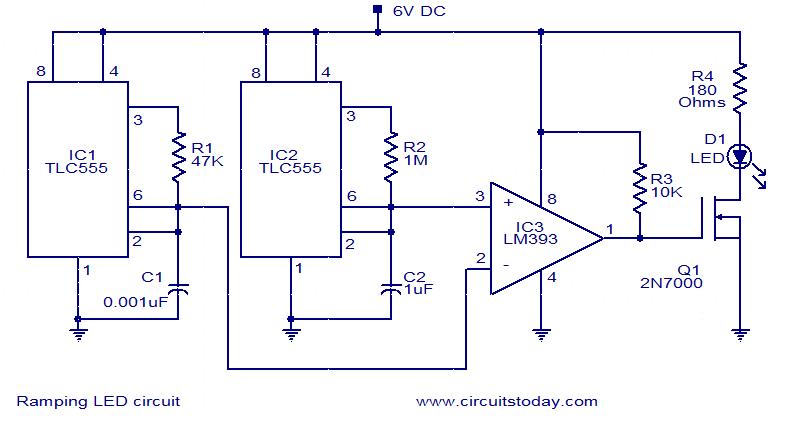
Tic Tac Tunes Circuit Diagram
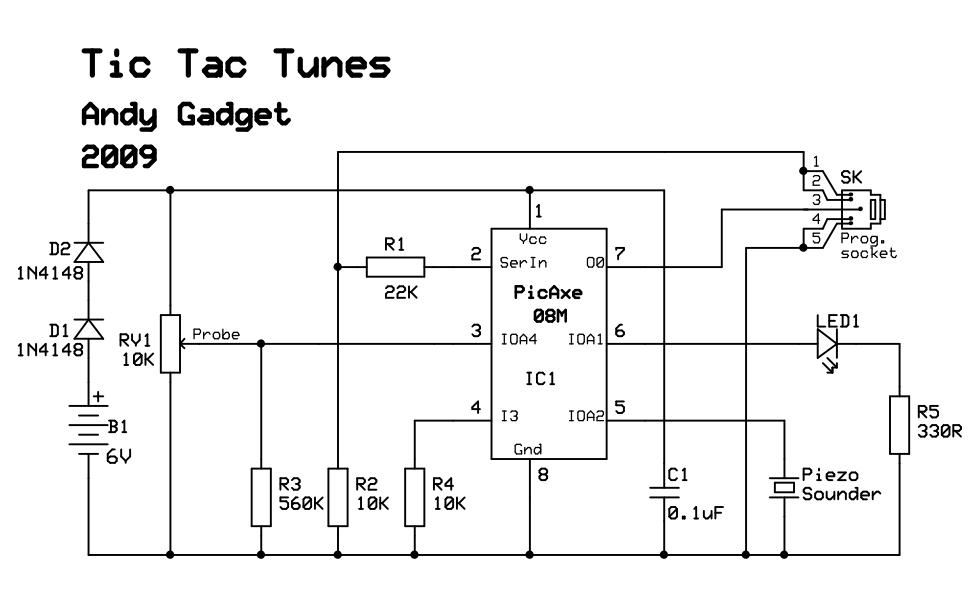
Due to limited space, a small 6V battery is utilized, and the voltage is reduced by 1.2V to 4.8V using diodes D1 and D2. The PicAxe chip is employed in the circuit.
In this circuit design, the primary power source is a compact 6V battery, which is advantageous in applications where space constraints are significant. To achieve the desired operating voltage of 4.8V for the PicAxe microcontroller, two silicon diodes, labeled D1 and D2, are used in series. Each diode typically has a forward voltage drop of approximately 0.6V to 0.7V, thus the combined drop across both diodes results in a total reduction of about 1.2V from the initial 6V supply.
The PicAxe chip, a popular microcontroller for educational and hobbyist projects, operates efficiently at 4.8V. This voltage level is crucial for ensuring the chip functions correctly without risking damage from overvoltage. The circuit may also include additional passive components, such as capacitors for smoothing and filtering purposes, to stabilize the voltage supply to the microcontroller and mitigate any noise.
It is important to consider the current requirements of the PicAxe chip and ensure that the diodes selected can handle the load without overheating or exceeding their current ratings. The choice of diodes should also account for their reverse voltage ratings to prevent breakdown in case of reverse polarity connections.
In summary, this circuit effectively utilizes a small 6V battery and employs two diodes to achieve a regulated 4.8V supply for the PicAxe microcontroller, making it suitable for compact electronic projects where space is limited.As space is at a premium here, I`m using a small 6V battery and dropping the voltage down by 1.2V to 4.8V with the diodes D1 and D2. The PicAxe chip.. 🔗 External reference
In this circuit design, the primary power source is a compact 6V battery, which is advantageous in applications where space constraints are significant. To achieve the desired operating voltage of 4.8V for the PicAxe microcontroller, two silicon diodes, labeled D1 and D2, are used in series. Each diode typically has a forward voltage drop of approximately 0.6V to 0.7V, thus the combined drop across both diodes results in a total reduction of about 1.2V from the initial 6V supply.
The PicAxe chip, a popular microcontroller for educational and hobbyist projects, operates efficiently at 4.8V. This voltage level is crucial for ensuring the chip functions correctly without risking damage from overvoltage. The circuit may also include additional passive components, such as capacitors for smoothing and filtering purposes, to stabilize the voltage supply to the microcontroller and mitigate any noise.
It is important to consider the current requirements of the PicAxe chip and ensure that the diodes selected can handle the load without overheating or exceeding their current ratings. The choice of diodes should also account for their reverse voltage ratings to prevent breakdown in case of reverse polarity connections.
In summary, this circuit effectively utilizes a small 6V battery and employs two diodes to achieve a regulated 4.8V supply for the PicAxe microcontroller, making it suitable for compact electronic projects where space is limited.As space is at a premium here, I`m using a small 6V battery and dropping the voltage down by 1.2V to 4.8V with the diodes D1 and D2. The PicAxe chip.. 🔗 External reference
Warning: include(partials/cookie-banner.php): Failed to open stream: Permission denied in /var/www/html/nextgr/view-circuit.php on line 713
Warning: include(): Failed opening 'partials/cookie-banner.php' for inclusion (include_path='.:/usr/share/php') in /var/www/html/nextgr/view-circuit.php on line 713

